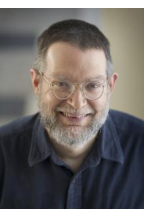David Yevick

Biography
Professor Yevick' s research group delivers practical, innovative and leading-edge solutions to industry while developing general physical and mathematical results and techniques that can be employed in wide areas of applied physics.
Professor Yevick's current research, performed in collaboration with CIENA, concentrates on efficient procedures for analyzing statistically unlikely quantities such as random bit errors, measurement techniques for communication systems with emphasis on very high-speed measurements of polarization activity and polarization mode delay in optical communication components and theoretical and numerical models of polarization evolution.
Research Interests
Beam Propagation (Wave Propagation)
Multicanonical and Transition Method
Muller Matrix Formalism of Polarization Mode Dispersion
Technology and Optics
Photonics
Optical Systems
Scholarly Research
Education
1985, Docent Physics, University of Lund, Lund, Sweden
1977, Doctorate Physics, Princeton University, Princeton, New Jersey, U.S.A
1975, Master of Arts Physics, Princeton University, Princeton, New Jersey, U.S.A
1973, Bachelor of Arts Physics, Harvard University, Cambridge, Massachusetts, U.S.A.
Teaching*
- NE 217 - Advanced Calculus and Numerical Methods 2
- Taught in 2022, 2023
- NE 451 - Simulation Methods
- Taught in 2020, 2021, 2022
- PHYS 122 - Waves, Electricity and Magnetism
- Taught in 2025
- PHYS 263 - Classical Mechanics and Special Relativity
- Taught in 2025
- PHYS 342 - Electricity and Magnetism 2
- Taught in 2020, 2023
- PHYS 349 - Advanced Computational Physics
- Taught in 2025
- PHYS 363 - Intermediate Classical Mechanics
- Taught in 2021, 2023
- PHYS 364 - Mathematical Physics 1
- Taught in 2020, 2022, 2025
- PHYS 365 - Mathematical Physics 2
- Taught in 2025
* Only courses taught in the past 5 years are displayed.
Selected/Recent Publications
Efficient beam propagation techniques D Yevick, B Hermansson IEEE Journal of quantum electronics 26 (1), 109-112
New formulations of the matrix beam propagation method: application to rib waveguides D Yevick, B Hermansson IEEE Journal of Quantum Electronics 25 (2), 221-229
Correspondence of variational finite-difference (relaxation) and imaginary-distance propagation methods for modal analysis D Yevick, W Bardyszewski Optics letters 17 (5), 329-330
A guide to electric field propagation techniques for guided-wave optics D Yevick Optical and Quantum Electronics 26 (3), S185-S197
Design rules for slanted-angle polarization rotators H Deng, DO Yevick, C Brooks, PE Jessop Journal of lightwave technology 23 (1), 432
Efficient beam propagation techniques D Yevick, B Hermansson IEEE Journal of quantum electronics 26 (1), 109-112
New formulations of the matrix beam propagation method: application to rib waveguides D Yevick, B Hermansson IEEE Journal of Quantum Electronics 25 (2), 221-229
Correspondence of variational finite-difference (relaxation) and imaginary-distance propagation methods for modal analysis D Yevick, W Bardyszewski Optics letters 17 (5), 329-330
A guide to electric field propagation techniques for guided-wave optics D Yevick Optical and Quantum Electronics 26 (3), S185-S197
Design rules for slanted-angle polarization rotators H Deng, DO Yevick, C Brooks, PE Jessop Journal of lightwave technology 23 (1), 432